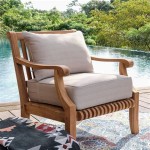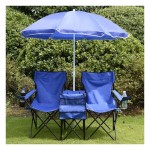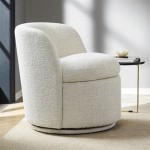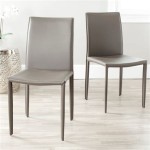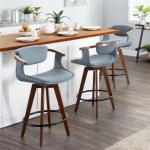Outdoor Seat and Back Chair Cushions: Enhancing Comfort and Style
Outdoor seat and back chair cushions are essential accessories for transforming outdoor seating into comfortable and inviting spaces. They not only provide padding and support but also add a touch of style and personality to patios, decks, gardens, and balconies. The selection of appropriate cushions requires careful consideration of factors such as material, size, durability, and design to ensure optimal performance and aesthetic appeal in the specific outdoor environment.
The primary function of outdoor seat and back chair cushions is to enhance comfort. Prolonged sitting on hard or uncomfortable surfaces can lead to discomfort, fatigue, and even pain. Cushions provide a layer of padding that distributes weight more evenly, reducing pressure points and promoting better posture. Back cushions offer lumbar support, further improving comfort and reducing strain on the back muscles. This is especially important for individuals who spend extended periods outdoors, whether relaxing, dining, or working.
Beyond comfort, outdoor cushions contribute significantly to the aesthetic appeal of outdoor spaces. They are available in a wide range of colors, patterns, and textures, allowing individuals to customize their seating arrangements to match their personal style and complement the surrounding décor. Cushions can be used to introduce pops of color, create a cohesive theme, or simply add a touch of elegance to an otherwise mundane outdoor setting. The ability to easily swap out cushions allows for seasonal updates or quick transformations to suit different occasions.
The selection of materials for outdoor seat and back chair cushions is critical to their longevity and performance. Outdoor cushions are constantly exposed to the elements, including sunlight, rain, wind, and temperature fluctuations. Therefore, the materials used must be durable, weather-resistant, and easy to maintain. The filling material, typically foam or fiberfill, should be resistant to mold, mildew, and compression. The outer fabric should be fade-resistant, water-repellent, and easy to clean.
Several types of materials are commonly used in the construction of outdoor cushions. Acrylic fabrics, such as Sunbrella, are known for their exceptional fade resistance and durability. They are also water-repellent and easy to clean, making them a popular choice for high-end outdoor furniture. Polyester fabrics are more affordable than acrylic but still offer good fade resistance and water repellency. They are also relatively easy to maintain. Olefin fabrics are another option that is both durable and stain-resistant. They are also resistant to mold and mildew, making them suitable for humid environments.
The filling material plays a crucial role in the comfort and support provided by outdoor cushions. Polyurethane foam is a common choice due to its affordability and ability to provide good cushioning. However, it can break down over time, especially when exposed to moisture. Dryfast foam is a higher-quality option that is specifically designed for outdoor use. It has an open-cell structure that allows water to drain quickly, preventing mold and mildew growth. Fiberfill is another popular choice, particularly for back cushions. It is lightweight and provides good support. It is also relatively easy to clean and maintain.
Choosing the correct size and shape of outdoor cushions is essential for achieving optimal comfort and aesthetic appeal. Cushions should be appropriately sized for the chairs they are intended for. Too small, and they will look inadequate; too large, and they will be cumbersome and uncomfortable. It is important to measure the seat and back of the chair before purchasing cushions to ensure a proper fit. The shape of the cushion should also complement the shape of the chair. Square cushions are suitable for square chairs, while round cushions are better suited for round chairs. Cushions with curved backs are designed to fit ergonomic chairs that offer greater lumbar support.
Proper care and maintenance are essential for extending the lifespan of outdoor seat and back chair cushions. Regular cleaning is necessary to remove dirt, dust, and stains. Most outdoor cushions can be cleaned with mild soap and water. It is important to rinse thoroughly and allow the cushions to air dry completely before storing them. In some cases, it may be necessary to use a specialized fabric cleaner to remove stubborn stains. It is also advisable to protect cushions from extreme weather conditions by storing them indoors or covering them when not in use. This will help prevent fading, water damage, and mold growth.
The design of outdoor seat and back chair cushions can significantly impact the overall aesthetic of an outdoor space. Cushions are available in a wide range of colors, patterns, and styles to suit different tastes and preferences. Solid-colored cushions are a versatile option that can be easily coordinated with other outdoor furnishings. Patterned cushions can add visual interest and personality to a space. Floral patterns, stripes, and geometric designs are popular choices. The style of the cushion should also complement the style of the furniture and the overall décor of the outdoor space. Traditional-style cushions often feature intricate patterns and ornate details, while modern-style cushions tend to be more minimalist and streamlined.
Material Durability and Weather Resistance
The selection of durable and weather-resistant materials is paramount for outdoor seat and back chair cushions. The harsh outdoor environment presents several challenges, including prolonged exposure to sunlight, rain, wind, and temperature fluctuations. Cushions made from inferior materials are likely to fade, crack, and deteriorate quickly, leading to premature replacement. Acrylic fabrics, such as Sunbrella, are renowned for their exceptional UV resistance, which prevents fading and discoloration. These fabrics also possess inherent water repellency, minimizing water absorption and preventing mold and mildew growth. Polyester fabrics offer a more affordable alternative with reasonable fade resistance and water repellency. Olefin fabrics are another durable option that is stain-resistant and resistant to mold and mildew, making them suitable for humid climates. The choice of filling material is equally important. Dryfast foam is specifically designed for outdoor use, featuring an open-cell structure that allows water to drain rapidly, preventing moisture buildup and inhibiting mold growth. Regular foam is less suitable for outdoor use as it can become saturated with water, leading to mold and mildew problems.
Comfort and Support Considerations
Comfort is a primary consideration when selecting outdoor seat and back chair cushions. Cushions provide padding and support, reducing pressure points and promoting better posture. The thickness and density of the cushion play a crucial role in comfort levels. Thicker cushions generally provide more padding and support, while denser cushions offer greater resistance to compression. Back cushions are essential for providing lumbar support, reducing strain on the back muscles and promoting proper spinal alignment. Ergonomically designed back cushions conform to the natural curve of the spine, offering maximum support and comfort. The shape and size of the cushion should also be appropriate for the chair it is intended for. Ill-fitting cushions can be uncomfortable and detract from the overall aesthetic of the seating arrangement. The texture of the fabric also contributes to comfort. Soft and smooth fabrics are more comfortable against the skin than rough or scratchy fabrics.
Maintenance and Cleaning Practices
Proper maintenance and cleaning are essential for extending the lifespan of outdoor seat and back chair cushions. Regular cleaning removes dirt, dust, and stains, preventing them from becoming embedded in the fabric. Most outdoor cushions can be cleaned with mild soap and water. The cushions should be rinsed thoroughly and allowed to air dry completely before storing them. For stubborn stains, a specialized fabric cleaner may be necessary. It is important to follow the manufacturer's instructions carefully when using cleaning products. Protecting cushions from extreme weather conditions is also crucial. When not in use, cushions should be stored indoors or covered with a protective cover. This will help prevent fading, water damage, and mold growth. Regular inspection of cushions for signs of wear and tear is also advisable. Tears and rips should be repaired promptly to prevent further damage. With proper care and maintenance, outdoor seat and back chair cushions can provide years of comfortable and stylish seating.

Costaelm Harmony Outdoor 2 Piece Deep Set Patio Seat Back Chair Cushions 25 X Orange Walmart Com

Greendale Home Fashions Outdoor Seat Back Chair Cushion

Artplan Seat Back Outdoor Chair Cushion Tufted Replacement For Patio Furniture 20x20x4 1 Count Floral Light Green Yzbhf1023

Artplan Seat Back Outdoor Chair Cushion Tufted Replacement For Patio Furniture 20 In X 4 1 Count Floral Beige Blue Yzbfl174

Greendale Home Fashions Outdoor Seat Back Chair Cushion Roma Floral

Greendale Home Fashions 21 Inch X 42 Outdoor Seat Back Chair Cushion Only Skyworks

Out Door Chair Deep Seat Back Cushion Pad Patio Furniture Cheap Durable Floral Ebay

Blisswalk 19 L X W 5 H Outdoor Seat Cushions Pack Of 2 Tufted Patio Chair Pads Square Foam For Dining Light Brown Hs203

Greendale Home Fashions Aloha Outdoor Lounge Chair Cushion Set Of 2 Red

Blisswalk L40 Xw20 Xh4 Outdoor Chair Cushion Tufted Seat Back Floral Patio Furniture W Tie In Gre Bzbs16a2


